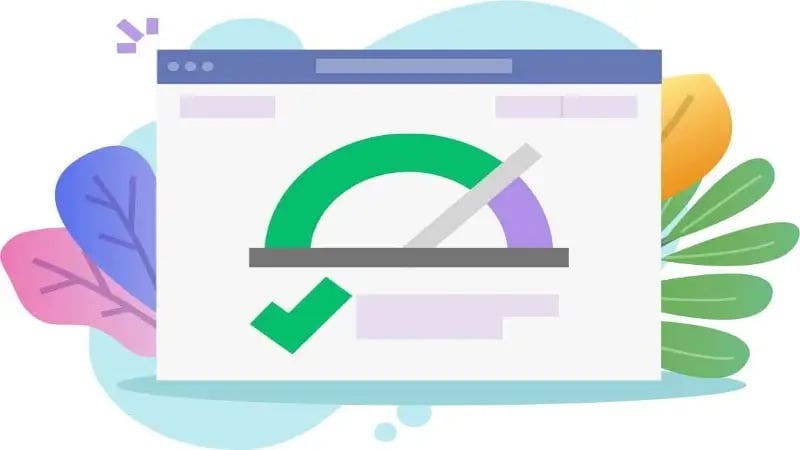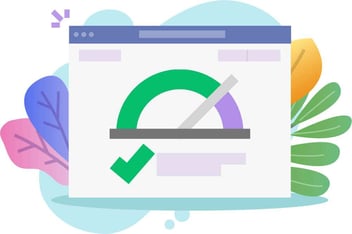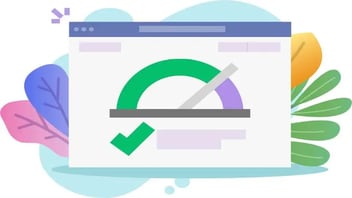Grand tableau de contenu: impact sur le marketing?
Voulez-vous plus de trafic, plus de prospects et plus de ventes ? Vous pouvez optimiser régulièrement les performances de votre site web pour faciliter l'optimisation des moteurs de recherche (SEO) ou la refonte de votre site web. Un site web amélioré augmentera les performances de votre marketing, vous apportera plus de trafic, un taux de conversion plus élevé et un meilleur retour sur vos efforts. L'un des facteurs est le plus grand tableau de contenu.
Qu'est-ce que le Largest Contentful Paint ?
Le Largest Contentful Paint (LCP) est un indicateur de performance web qui mesure les performances de chargement d'un site web ou d'une application web. Il s'agit du temps écoulé entre le début du chargement de la page et le moment où l'élément de contenu le plus volumineux (texte ou image) est affiché à l'écran.
Le LCP est une mesure cruciale pour l'optimisation des moteurs de recherche (SEO) et les concepteurs de sites web, et fait partie intégrante de la compréhension des performances de votre site web; il est destiné à mesurer les performances de chargement du point de vue de l'utilisateur, et c'est une mesure importante pour améliorer votre classement sur Google, car il mesure le moment où le contenu principal de la page est visible pour l'utilisateur. Un score LCP rapide peut donner l'impression à l'utilisateur qu'une page web se charge rapidement, tandis qu'un score lent peut l'inciter à quitter prématurément le site. Un bon score LCP doit être inférieur à 2,5 secondes.
Quel est l'impact du Largest Contentful Paint?
Pour améliorer les performances de votre site web et l'expérience utilisateur qui en résulte, il est important de comprendre l'impact que le LCP peut avoirsur l'expérience utilisateur d'un site web.
-
Un score LCP lent peut indiquer que le contenu de la page principale doit être chargé plus rapidement, ce qui peut amener les utilisateurs à quitter le site prématurément. Il peut en résulter un taux de rebond élevé, ce qui a un impact négatif sur le classement du site dans les moteurs de recherche et sur sa visibilité générale. Les temps de chargement lents peuvent frustrer les utilisateurs, en particulier ceux qui disposent d'une connexion internet lente ou d'appareils bas de gamme. Un LCP lent peut avoir un impact négatif sur les taux de conversion, car les utilisateurs risquent de ne pas rester suffisamment longtemps sur le site pour effectuer l'action souhaitée.
-
Un score LCP rapide peut donner l'impression aux utilisateurs que le site web se charge rapidement, ce qui se traduit par une amélioration de l'engagement, des taux de conversion et de la satisfaction des utilisateurs. Un bon score LCP doit être inférieur à 2,5 secondes ; tout ce qui dépasse ce délai peut être considéré comme lent et entraîner une mauvaise expérience pour l'utilisateur.
Il convient de noter que le LCP n'est pas le seul indicateur qui détermine les performances d'un site web ; d'autres indicateurs, tels que First Contentful Paint, Speed Index, Time to Interactive et Total Blocking Time, jouent également un rôle crucial dans la détermination des performances globales d'un site web et de l'expérience d'une page.
Quelles sont les performances de votre site web ? Évaluez votre site web et découvrez-le en une minute :
Que pouvez-vous faire pour améliorer le LCP et l'expérience de l'utilisateur sur votre site web? Voici plusieurs mesures que vous pouvez prendre pour améliorer le Largest Contentful Paint (LCP) sur votre site web :
-
Optimiser les images : L'optimisation des images, par exemple en les compressant et en les redimensionnant, peut contribuer à réduire le temps de chargement et à améliorer le LCP.
-
Minimisez l'utilisation de scripts tiers volumineux : Les scripts tiers de grande taille peuvent ralentir le chargement des pages et avoir un impact négatif sur LCP. Réduire leur utilisation ou les charger de manière asynchrone peut contribuer à améliorer le LCP.
-
Utiliser un réseau de diffusion de contenu : Un réseau de diffusion de contenu (CDN) peut accélérer la diffusion du contenu de votre site web aux utilisateurs en le mettant en cache sur des serveurs plus proches de l'utilisateur.
-
Utiliser le fractionnement du code : Le fractionnement du code est une technique qui vous permet de diviser votre code JavaScript en petits morceaux qui peuvent être chargés à la demande. Cette technique permet de réduire le temps de chargement du code JavaScript initial et d'améliorer le LCP.
-
Utiliser la mise en cache du navigateur : la mise en cache du navigateur permet à un navigateur de stocker une copie des ressources de votre site web sur l'appareil de l'utilisateur afin qu'elles n'aient pas à être téléchargées à nouveau lors de visites ultérieures. Cela permet de réduire le temps de chargement des ressources et d'améliorer le LCP.
-
Réduire les polices web lourdes : les polices web lourdes peuvent ralentir le chargement des pages et avoir un impact négatif sur le LCP. La réduction des polices web lourdes ou l'utilisation de techniques de chargement des polices web telles que la propriété CSS font-display peuvent contribuer à améliorer le score LCP.
-
Surveillez et mesurez votre score LCP : Utilisez des outils de développement de navigateur ou des outils de test LCP basés sur le web pour surveiller et mesurer votre score LCP et identifier les domaines dans lesquels des améliorations peuvent être apportées.
-
Différer le chargement des ressources non critiques : Différez le chargement des ressources non critiques, telles que les outils d'analyse, les widgets de médias sociaux ou les publicités, jusqu'à ce que le contenu de la page principale soit chargé et visible par l'utilisateur.
Il convient de noter que l'amélioration du LCP est un processus continu et que vous devez surveiller régulièrement les performances de votre site web et adapter vos stratégies d'optimisation en conséquence. Comme pour toute optimisation, il est essentiel de tester votre site web/application web sur différents navigateurs et appareils, car la LCP peut être affectée par d'autres facteurs.
Outils à utiliser
Il existe plusieurs outils de conception web et de référencement disponibles pour vous aider à améliorer le Largest Contentful Paint (LCP) sur votre site web ou votre application web :
-
Outils de développement du navigateur : La plupart des navigateurs modernes comprennent des outils qui peuvent vous aider à mesurer et à identifier le LCP sur votre site web. Par exemple, dans Google Chrome, vous pouvez utiliser l'outil Lighthouse dans le panneau Audits des outils de développement pour mesurer votre score LCP et identifier les problèmes potentiels.
-
WebPageTest : WebPageTest est un outil open-source de test des performances des sites web qui peut mesurer le score LCP de votre site scoreeCommerceoffice hours et identifier les éléments spécifiques à l'origine d'un LCP lent.
-
Calibre: Calibre est un outil basé sur le web qui vous permet de tester votre site web et de mesurer son score LCP. Il fournit également une analyse détaillée des éléments à l'origine de la lenteur du score LCP et indique comment y remédier.
-
SpeedCurve : SpeedCurve est un outil de surveillance des performances des sites web qui vous permet de mesurer le score LCP de votre site web au fil du temps et d'identifier des modèles ou des tendances qui peuvent indiquer des domaines à améliorer.
-
Rapport sur l'expérience des utilisateurs de Chrome : Ce rapport est un ensemble de données publiques de mesures de l'expérience utilisateur pour les origines populaires sur le web, telles qu'elles sont vécues par les utilisateurs de Chrome dans des conditions réelles. Les données sont collectées à partir de l'API du rapport sur l'expérience utilisateur de Chrome (CrUX), qui fournit des données utilisateur précises sur des indicateurs de performance tels que le plus grand tableau de contenu (Largest Contentful Paint).
-
Google Search Console : Google Search Console a ajouté un nouveau rapport Core Web Vitals qui inclut LCP ; c'est un excellent moyen de surveiller le score LCP de votre site web et d'identifier les pages qui posent problème.
La combinaison de ces outils et techniques peut vous donner une compréhension plus complète du LCP sur votre site web et vous aider à apporter des améliorations plus efficaces.
Le LCP est une mesure essentielle à prendre en compte lors de l'évaluation des performances de votre site web. En comprenant l'impact du LCP sur l'expérience de l'utilisateur et les taux de conversion, vous pouvez améliorer la performance de votre site web et, en fin de compte, générer plus de revenus pour votre entreprise.
Ce contenu est disponible en:
- Allemand: Was ist Largest Contentful Paint und die Bedeutung im Marketing?
- Anglais: What is Largest Contentful Paint and How Does It Impact Marketing?
- Espagnol: ¿Qué es la mayor pintura de contenidos y cómo afecta al marketing?
- Italien: Che cos'è il Largest Contentful Paint e che impatto ha sul marketing?
- Roumain: Largest Contentful Paint & marketing impact?
- Chinois: 什么是最大的内容涂料,它对营销有何影响?











Commentez ci-dessous